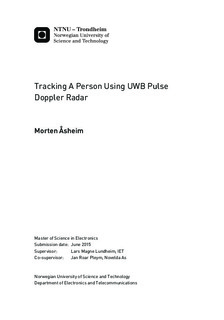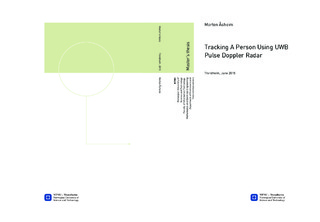| dc.description.abstract | There are today a large number of different tracking systems and the subject of tracking targets is not a new one. A lot of the tracking done is in connection with aviation and military uses, but as the "internet of things" has become more popular the possibility to expand to households has appeared. To be able to track people in buildings or your own house opens a lot of possibilities for different applications, for example in home security.
The usage of small radars, in the size of a few square centimeters, for tracking in households was an interesting topic for Novelda AS, which this thesis was written in collaboration with. The task was therefore to create a tracking system using Novelda's Xethru short-range radars, to track a walking person in a room.
A tracking system was developed to be used in said environment. The total system consisted of four main parts. The first part was the kalman filter. The kalman filter smoothed out noisy data and provided estimates of the range and speed of the target. Then the gating was implemented, allowing only measurements from the radar that was within a certain range from the predicted position. Then, in the case when there was received multiple measurements at the same time, the global nearest neighbour method chose the measurement closest to the predicted position. In the end, a triangulation function was made to give out a final position $(x,y)$ using the two radars.
The thesis first gave a thorough description of the problem. Important parts of the tracking system was then explained and implemented. The system was then tested in simulations and later with real radar measurements. All the simulation and real radar measurements results were then presented in various plots and then discussed.
Topics for further work were discussed and in the end a conclusion was drawn. It was concluded that the tracking system provided satisfactory results relative to the SNRs given. The simulation gave a good track estimation up to 5.66 m distance from origo, while the real radar measurements gave the same at 4 m. The author then concluded that the tracking system algorithm performed well, but not well enough for it to be used in any household tracking system with its current SNR values. The performance could be improved by following some of the suggestions mentioned in further work. | |

